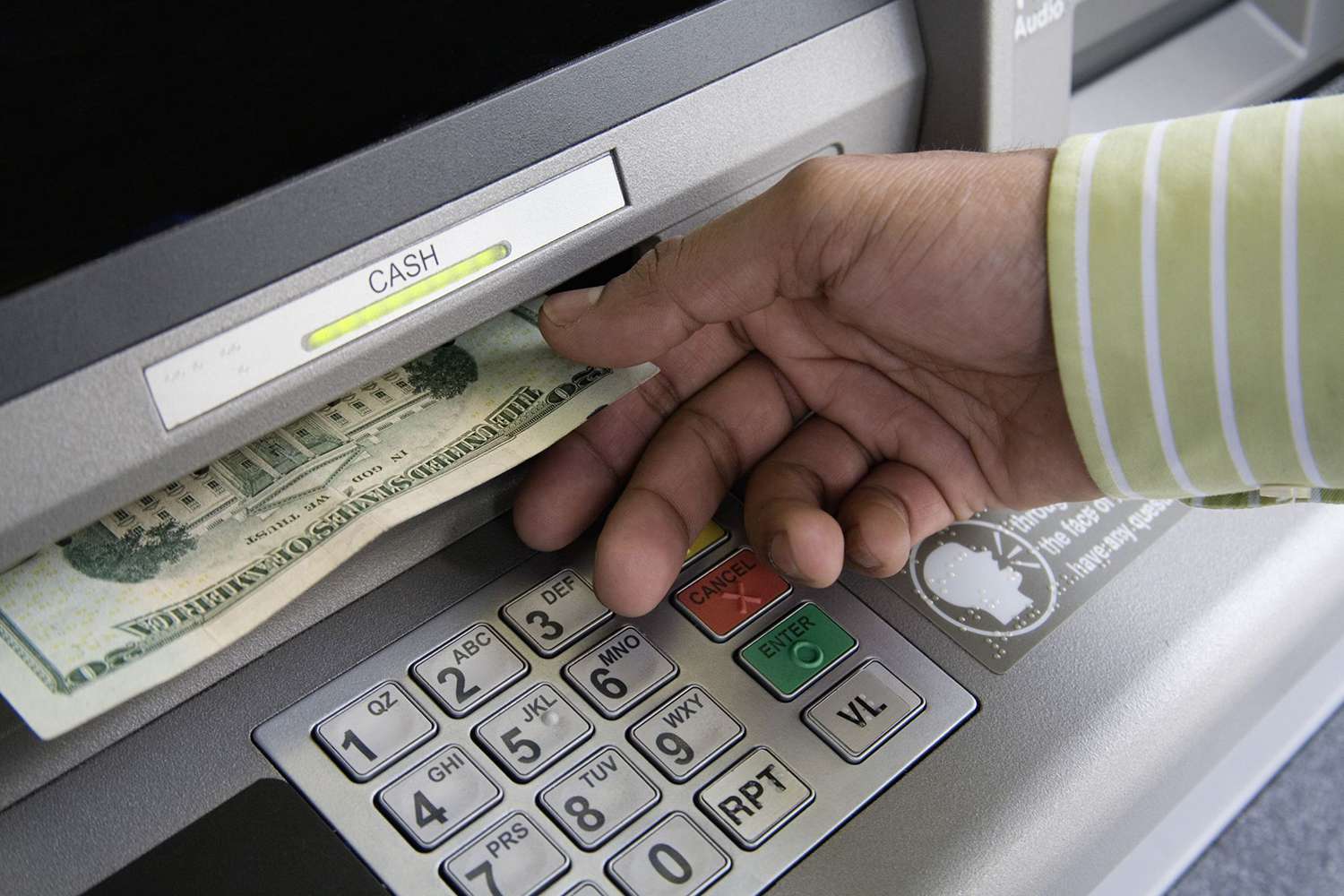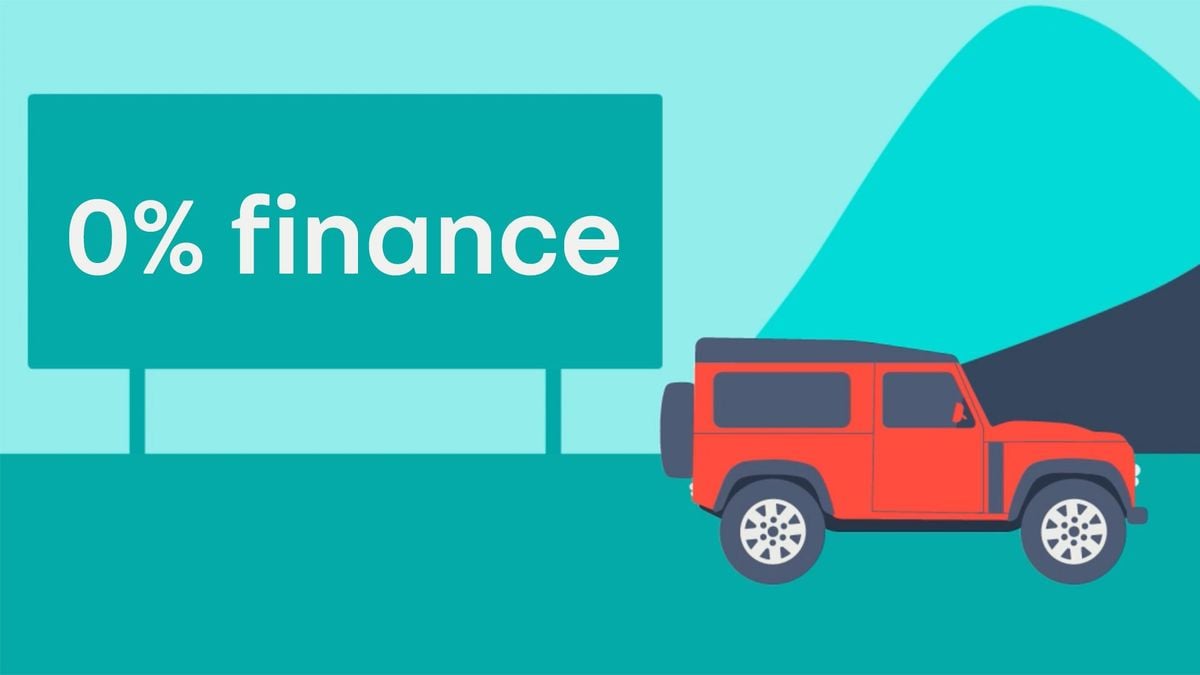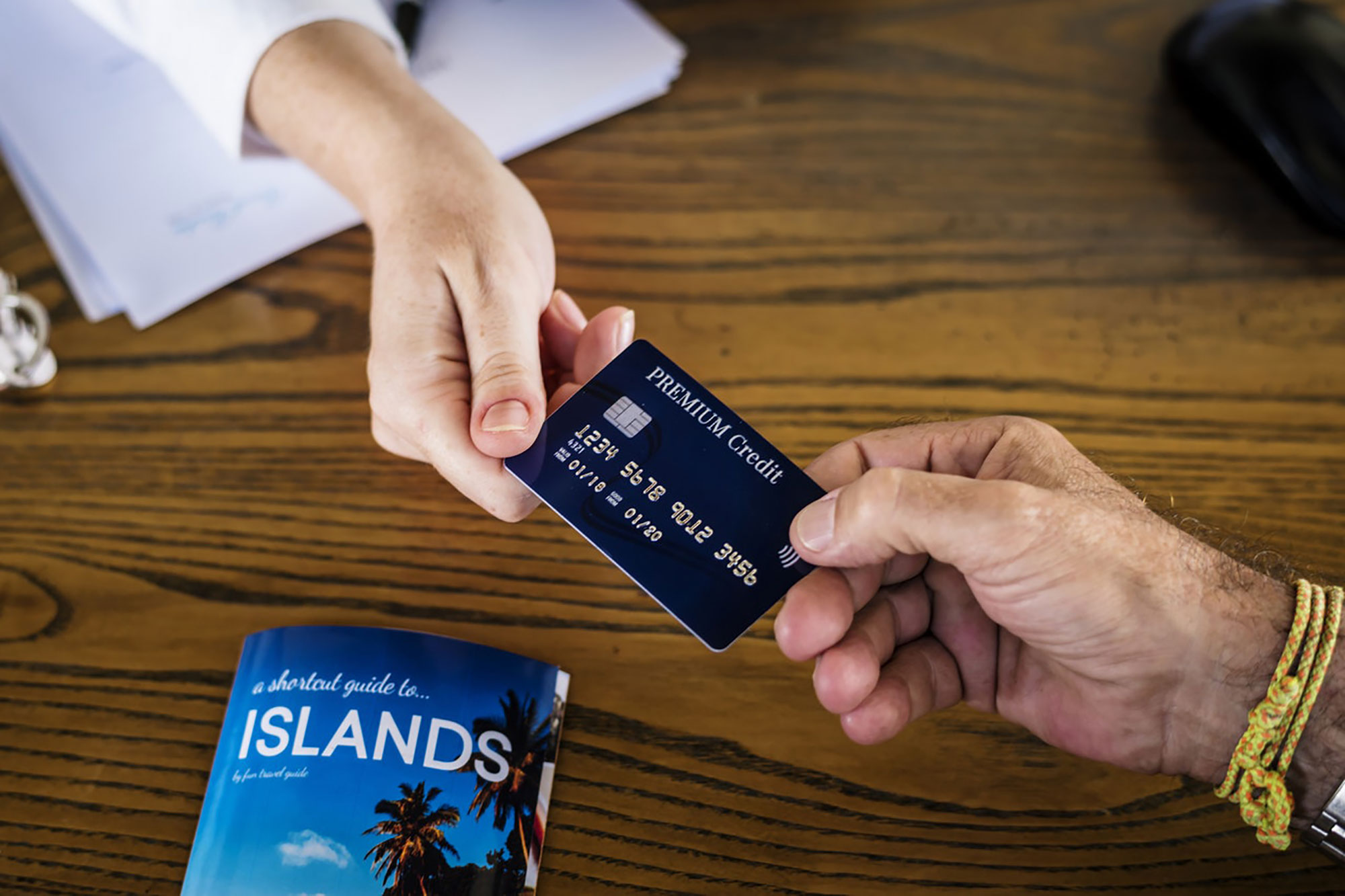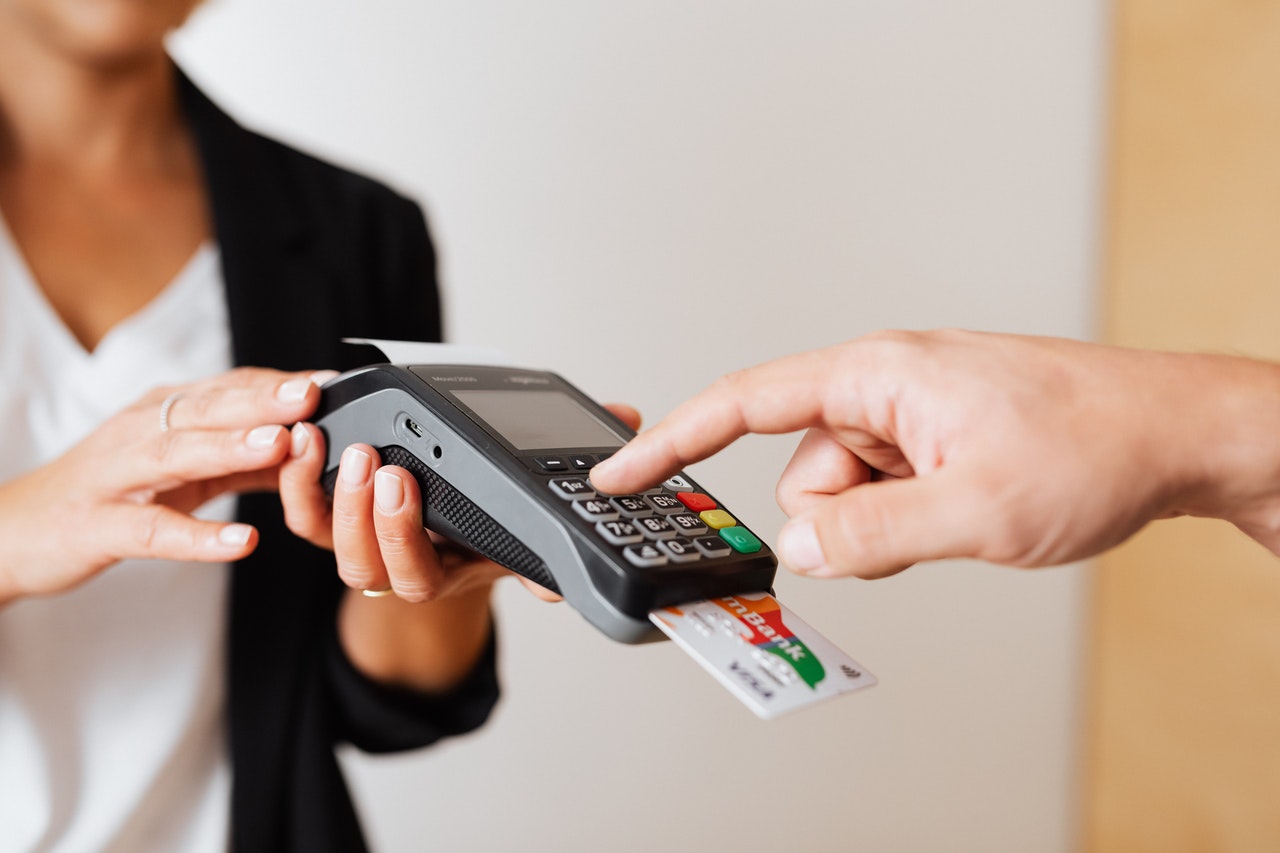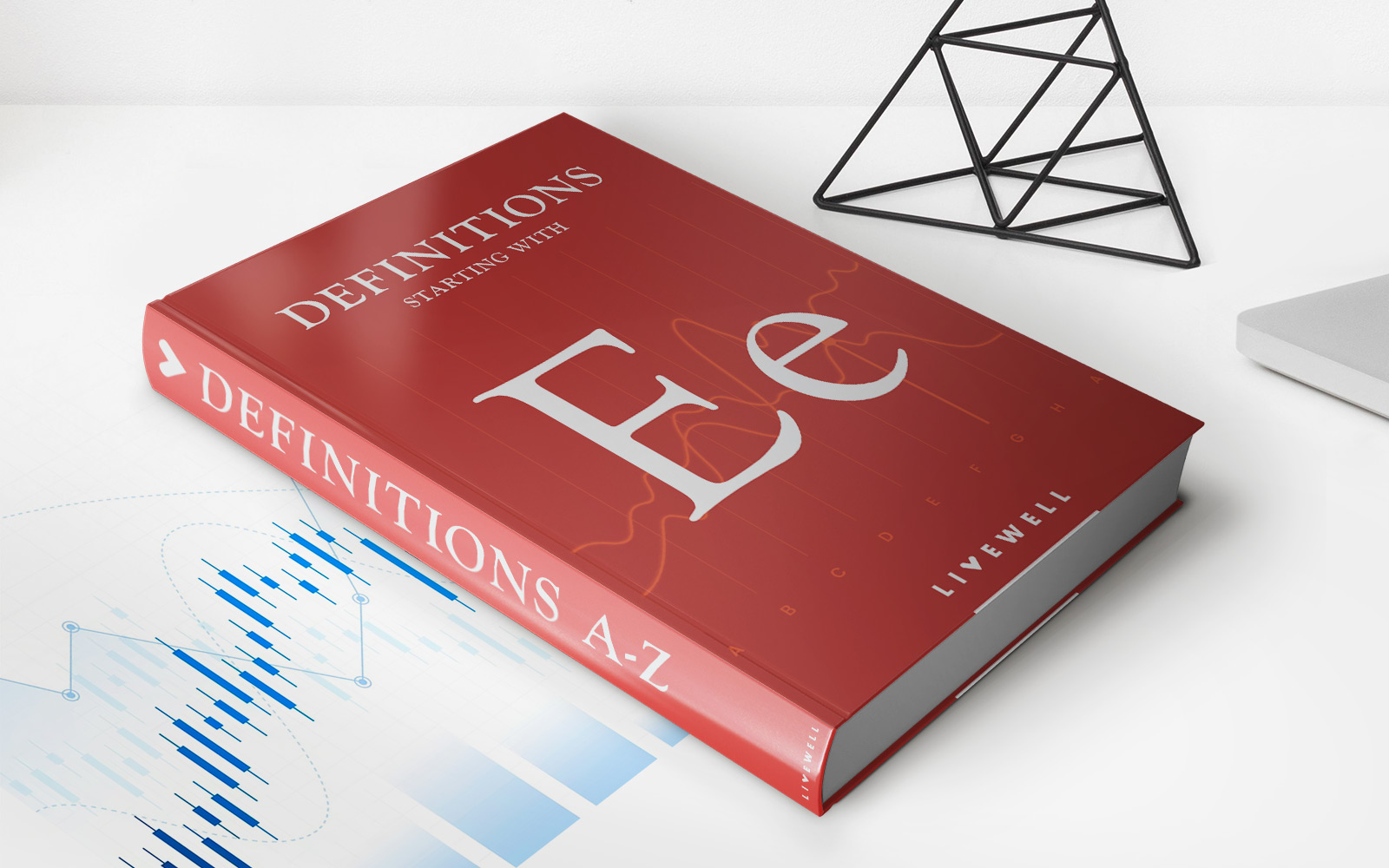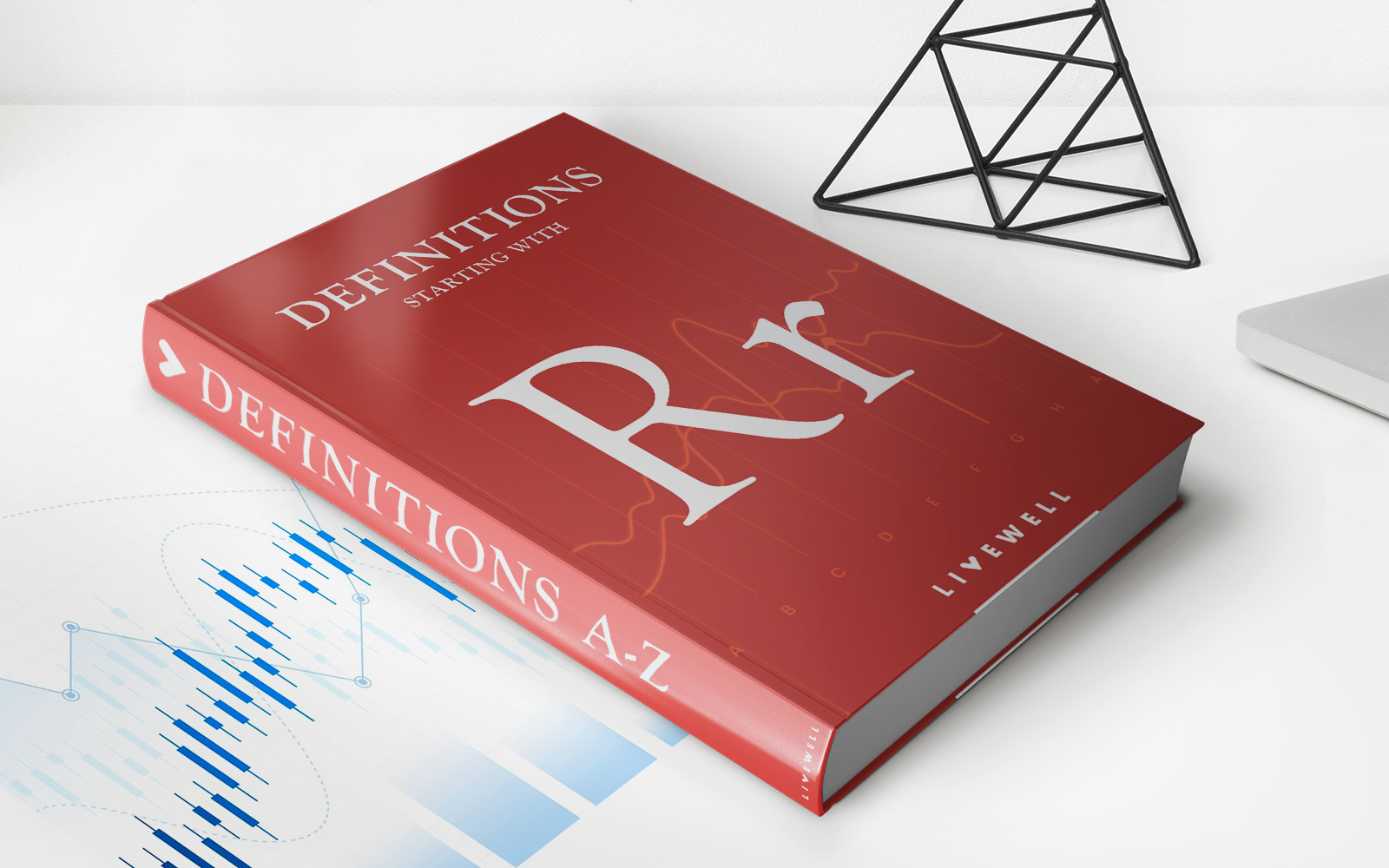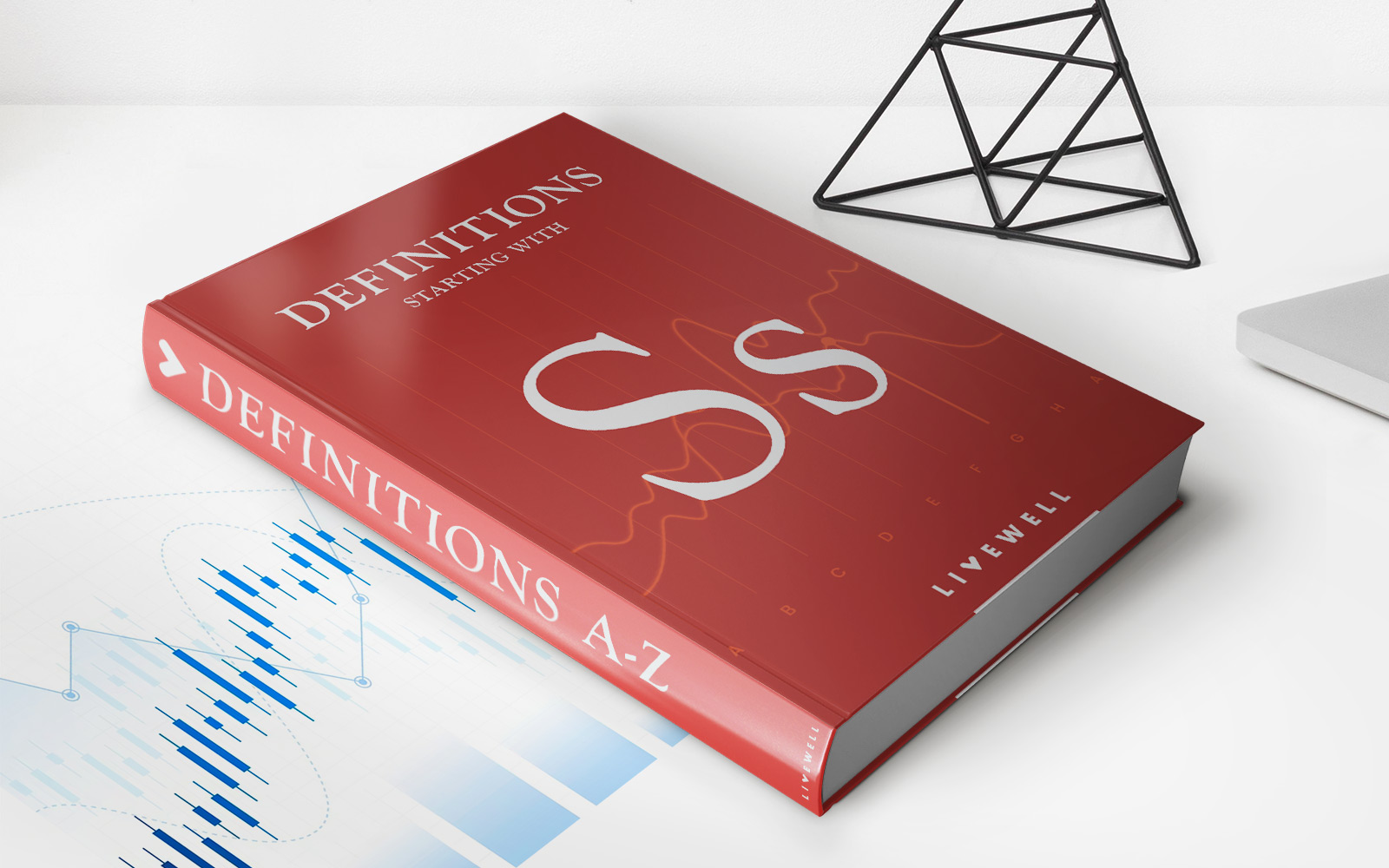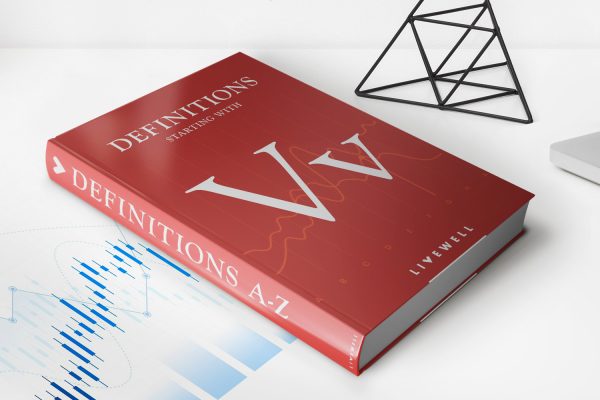

Finance
What Does Buying On Credit Mean
Modified: March 6, 2024
Learn what buying on credit means in the world of finance and how it can impact your financial situation. Find out the pros and cons of this payment method.
(Many of the links in this article redirect to a specific reviewed product. Your purchase of these products through affiliate links helps to generate commission for LiveWell, at no extra cost. Learn more)
Table of Contents
Introduction
Buying on credit has become a common practice in today’s consumer-driven society. Whether it’s purchasing a new car, furniture, or even everyday items, credit has made it easier for people to make purchases without having to pay the full amount upfront. But what exactly does buying on credit mean? In simple terms, it refers to the act of acquiring goods or services with the promise to pay for them at a later time, typically with interest.
With the popularity of credit cards, personal loans, and other forms of credit, buying on credit has become an integral part of our financial system. It allows individuals to access funds they may not currently have, enabling them to make large purchases and fulfill their immediate needs or wants. However, it’s important to understand the implications and potential consequences of buying on credit before making any financial commitments.
In this article, we will explore the definition of buying on credit, the different types of credit purchases, as well as the pros and cons associated with this approach. We will also discuss how buying on credit works, factors to consider before making a credit purchase, and its impact on your credit score. Finally, we’ll provide some valuable tips for making responsible credit purchases. So, whether you are already accustomed to buying on credit or are considering it for the first time, this article aims to provide you with the necessary information to make informed decisions about your financial choices.
Definition of Buying on Credit
When we talk about buying on credit, we’re essentially referring to a transaction where a consumer acquires goods or services without immediately paying for them in full. Instead, the payment is deferred to a later date. In this scenario, the seller or the service provider extends credit to the buyer, allowing them to make the purchase upfront and providing them with a defined period of time to repay the amount owed.
At its core, buying on credit is a form of borrowing. The buyer essentially becomes a borrower, and the seller or service provider acts as a lender. The buyer obtains immediate access to the desired product or service, while the seller or service provider assumes the risk of non-payment.
Credit can be extended in various forms. One common method is through credit cards, where the cardholder can make purchases up to a predetermined credit limit. Another common form of credit is installment loans, where the borrower agrees to repay the borrowed amount in regular installments over a specific period of time.
It’s important to note that buying on credit typically involves an additional cost in the form of interest. The lender charges interest on the amount borrowed, which serves as compensation for the risk they undertake and the opportunity cost of lending the money. The interest rate may vary depending on the terms of the credit agreement, the borrower’s creditworthiness, and the prevailing market conditions.
Buying on credit offers individuals the flexibility to acquire goods and services that may otherwise be beyond their immediate financial means. It allows consumers to spread out the cost of a purchase over time and manage their cash flows more effectively. However, it’s crucial to exercise responsible borrowing practices and carefully consider the terms and conditions, including the interest rate and repayment schedule, to avoid falling into debt or damaging one’s credit history.
Types of Credit Purchases
Buying on credit encompasses a wide range of transactions and financial arrangements. Here are some common types of credit purchases:
- Credit Cards: Credit cards are one of the most prevalent forms of credit purchases. With a credit card, consumers can make purchases up to a predefined credit limit. They have the option to pay off the full amount by the due date or pay a minimum payment and carry the remaining balance, which accrues interest over time.
- Installment Loans: Installment loans involve the borrower receiving a lump sum of money from a lender and agreeing to repay it in fixed monthly installments. This type of credit purchase is common for larger expenses, such as buying a car or financing a major home improvement project.
- Store Credit: Many retailers offer their own store credit cards or financing options. These allow customers to make purchases on credit specifically for that store or brand, often with promotional interest rates or rewards programs tied to the purchases.
- Personal Loans: Personal loans are unsecured loans provided by financial institutions, such as banks or online lenders. These loans can be used for various purposes, and the borrower receives a fixed amount of money that needs to be repaid over a set period, with interest.
- Mortgages: A mortgage is a type of long-term loan used to finance the purchase of a home. It allows individuals to buy property by making a down payment and borrowing the remaining amount from a lender, with repayment spreading over several years.
- Student Loans: Student loans are specifically designed to help students with the costs of higher education. They can be obtained from government agencies or private lenders and usually have favorable repayment terms, such as deferred payments or income-based repayment options.
- Payday Loans: Payday loans are short-term loans that provide individuals with quick cash advances to be repaid with their next paycheck. These loans typically come with high interest rates and fees, making them a less desirable option due to the potential for a debt spiral.
Each type of credit purchase has its own terms and conditions, interest rates, and repayment schedules. It’s essential to carefully consider the specific details of any credit agreement to fully understand the cost and implications before committing to a purchase.
Pros and Cons of Buying on Credit
Buying on credit offers both advantages and disadvantages. It’s important to weigh the pros and cons before deciding to make a credit purchase. Here are some key points to consider:
Pros:
- Immediate Access: Buying on credit allows individuals to acquire goods or services without having to save up the full amount. This can be especially beneficial for essential purchases or unexpected expenses.
- Flexibility: Credit purchases provide flexibility in managing one’s cash flow. Instead of paying a lump sum upfront, borrowers have the option to spread the cost over time, making it more manageable and allowing for better budgeting.
- Building Credit History: Responsible credit usage can help establish and build a positive credit history, which is crucial for future loan applications, renting an apartment, or even securing lower insurance premiums.
- Opportunity for Rewards: Some credit cards offer rewards programs, such as cashback or travel points, allowing consumers to earn benefits or discounts on their purchases.
- Emergency Fund Reserve: Using credit for emergencies can be a valuable resource when unexpected expenses arise. It can act as a temporary safety net until additional funds become available.
Cons:
- Interest and Fees: Carrying a balance on a credit purchase means paying interest on the borrowed amount. High interest rates or additional fees can significantly increase the overall cost of the purchase.
- Debt Accumulation: Easy access to credit can lead to impulsive buying decisions and a cycle of debt. Care must be taken to ensure credit purchases are within manageable limits and can be repaid effectively.
- Risk of Default: Failing to make regular payments or defaulting on credit purchases can negatively impact credit scores and lead to collection actions, legal consequences, and difficulties in obtaining future credit or loans.
- Overspending: The ease of buying on credit can lead to overspending and accumulating unnecessary debt. It’s important to exercise restraint and only make credit purchases that align with one’s budget and financial goals.
- Long-Term Costs: While credit purchases offer immediate access to desired items, the long-term costs, including interest and fees, can outweigh the initial benefit. It’s crucial to calculate the total cost of credit before making a purchase decision.
Understanding the pros and cons of buying on credit helps individuals make informed decisions and use credit as a helpful financial tool rather than a source of undue stress and financial burden.
How Buying on Credit Works
Buying on credit involves a process that allows individuals to make purchases without immediate payment. Here’s a general overview of how buying on credit works:
- Selection of Seller: The buyer identifies a seller or service provider from whom they wish to make a purchase. This can be a retail store, an online marketplace, or any other establishment that accepts credit payments.
- Submission of Credit Application: If the buyer does not already have a established credit account with the seller, they may need to submit a credit application. This typically involves providing personal information, such as name, address, income details, and sometimes consent for a credit check.
- Approval or Denial: The seller or the lender reviews the credit application to assess the buyer’s creditworthiness. They consider factors like credit history, income, and debt-to-income ratio to determine if the buyer is eligible for credit. Based on their evaluation, they approve or deny the credit application.
- Credit Limit: If the credit application is approved, the buyer is assigned a credit limit. This is the maximum amount the buyer can borrow or charge on credit. The credit limit depends on various factors, including the buyer’s credit history, income, and the lender’s assessment of their ability to repay the debt.
- Purchase: With an approved credit account or credit card, the buyer can now make the desired purchase. They provide their credit card information or account details to the seller, who processes the transaction. The buyer receives the product or service immediately, without having to pay the full amount upfront.
- Repayment Terms: After making the purchase, the buyer enters into a credit agreement with the seller or lender. This agreement outlines the repayment terms, including the interest rate, minimum monthly payment, and any fees associated with the credit purchase.
- Repayment: The buyer is responsible for repaying the borrowed amount according to the agreed-upon terms. This typically involves making regular payments, either in fixed monthly installments or as specified in the credit agreement. Failure to make timely payments can result in additional fees, interest charges, and potentially damage to the borrower’s credit score.
- Completion of Repayment: Once the buyer repays the borrowed amount in full, the credit account is considered closed. If the credit line remains open, the buyer can continue to make purchases up to the available credit limit.
It’s important for buyers to read and understand the terms and conditions of the credit agreement before making a credit purchase. This includes being aware of the interest rate, any penalties for late payments, and any other fees associated with the credit transaction. By understanding how buying on credit works, individuals can make informed decisions and use credit responsibly to meet their financial needs.
Factors to Consider before Buying on Credit
Buying on credit can provide convenience and flexibility, but it’s essential to consider several factors before making a credit purchase. Here are some key points to keep in mind:
- Financial Situation: Evaluate your current financial situation and determine if buying on credit aligns with your overall financial goals. Consider your income, expenses, and existing debt obligations to ensure that you can comfortably afford the monthly payments.
- Budgeting and Affordability: Create a budget to understand how a credit purchase would impact your financial stability. Determine if you can afford the monthly payments without compromising your other financial obligations or savings goals.
- Interest Rates and Fees: Pay attention to the interest rates and fees associated with the credit purchase. Higher interest rates can significantly increase the overall cost of the purchase and may make it more challenging to repay the debt.
- Credit History: Your credit history plays a vital role in determining your eligibility for credit and the interest rates offered. If you have a low credit score or a history of late payments or defaults, you may face higher interest rates or difficulty obtaining credit altogether.
- Repayment Terms: Review the repayment terms of the credit agreement. Understand the minimum monthly payment, the length of the repayment period, and any penalties or fees associated with late payments. Ensure that you can comfortably meet these obligations.
- Impact on Credit Score: Consider the impact of the credit purchase on your credit score. Late payments or high credit utilization can lower your credit score and affect future credit applications. Responsible credit usage can help build a positive credit history.
- Alternative Options: Explore alternative options before committing to a credit purchase. Can you save up for the purchase instead? Are there alternative financing options with lower interest rates? Consider all available options to make an informed decision.
- Future Financial Goals: Consider how the credit purchase aligns with your long-term financial goals. Will the purchase hinder your ability to save for retirement, invest in education, or achieve other important financial milestones?
By carefully considering these factors, you can determine if a credit purchase is the right decision for your financial well-being. It’s important to borrow responsibly and ensure that the terms and conditions of the credit agreement are favorable before making a commitment.
Impact of Buying on Credit on Credit Score
Buying on credit can have a significant impact on your credit score, which is a numerical representation of your creditworthiness. Here are some ways in which credit purchases can affect your credit score:
- Payment History: Making timely payments on your credit accounts is vital for maintaining a good credit score. Consistently paying the minimum amount due or more helps demonstrate your ability to responsibly manage credit.
- Credit Utilization: Credit utilization refers to the percentage of your available credit that you’re using. Higher credit utilization can negatively impact your credit score. Keeping your credit card balances and overall credit utilization low shows lenders that you are not reliant on credit and can manage your finances effectively.
- Types of Credit: Having a mix of different credit types, such as credit cards, installment loans, and mortgages, can positively impact your credit score. It shows lenders that you can handle various types of credit responsibly.
- New Credit Inquiries: Applying for new credit often results in a hard inquiry on your credit report, which can lower your credit score temporarily. Multiple inquiries within a short period can raise concerns about your creditworthiness. Therefore, it’s important to limit the number of credit applications you make.
- Average Age of Credit: The age of your credit accounts impacts your credit score. Closing old credit accounts or opening new ones reduces the average age of your credit, which can negatively affect your score. It is generally advisable to keep old credit accounts open, even if they have a zero balance.
- Credit Mix: Having a diverse credit mix can positively impact your credit score. It demonstrates your ability to handle different types of debt responsibly. However, this factor has a relatively smaller impact compared to payment history and credit utilization.
- Credit Limits and Balances: Keeping your credit card balances low in relation to their credit limits is crucial for maintaining a good credit score. Maxing out your credit cards can signal financial instability and negatively impact your creditworthiness.
It’s important to note that each person’s credit situation is unique, and the impact of credit purchases on credit scores may vary. However, responsible credit usage, such as making timely payments and keeping credit utilization low, generally leads to a positive impact on credit scores over time.
Monitoring your credit report regularly and correcting any inaccuracies is also essential for maintaining a healthy credit score. By understanding the factors that affect your credit score, you can make informed decisions about buying on credit and take steps to minimize any negative impacts on your financial well-being.
Tips for Responsible Credit Purchases
When it comes to buying on credit, responsible borrowing is essential to maintain financial stability and a good credit score. Here are some tips to help you make credit purchases wisely:
- Create a Budget: Before making a credit purchase, establish a realistic budget to determine if you can comfortably afford the monthly payments. Consider your income, expenses, and other financial obligations to ensure that you can meet your payment obligations without strain.
- Research and Compare: Before making a credit purchase, research and compare different lenders and credit options. Look for competitive interest rates, favorable repayment terms, and any additional fees or charges associated with the credit transaction.
- Only Borrow What You Need: Borrow only the amount you need and resist the temptation to borrow more. The more you borrow, the more interest you’ll have to pay, increasing the overall cost of the purchase.
- Read and Understand the Terms: Carefully review the terms and conditions of the credit agreement before committing to the purchase. Understand the interest rate, repayment schedule, any penalties or fees, and the consequences of late payments or default.
- Make Timely Payments: Pay your credit obligations on time to avoid late payment fees and negative impacts on your credit score. Set up automatic payments or reminders to ensure you don’t miss any due dates.
- Pay More than the Minimum: Whenever possible, aim to pay more than the minimum payment required. This helps reduce the overall interest paid and accelerates the repayment process.
- Keep Credit Utilization Low: Try to keep your credit utilization ratio below 30%. This means using only a fraction of your available credit. Lower credit utilization can positively impact your credit score.
- Monitor Your Credit: Regularly monitor your credit report to ensure its accuracy and identify any potential issues or discrepancies. Reporting errors promptly can help protect your credit score and financial well-being.
- Avoid Impulsive Purchases: Before making a credit purchase, take the time to evaluate if it’s a necessity or an impulse buy. Consider if the item or service is worth adding to your debt burden and how it aligns with your financial goals.
- Exercise Restraint: While credit may provide the ability to make purchases now, it’s essential to practice restraint and avoid accumulating excessive debt. Only make credit purchases when necessary and within your means.
By following these tips, you can make credit purchases responsibly, avoid unnecessary debt, and maintain a healthy credit score. Remember, credit is a valuable tool when used wisely, but it’s crucial to borrow within your means and be proactive in managing your financial obligations.
Conclusion
Buying on credit has become a prevalent practice in our consumer-driven society. While it offers convenience and flexibility, it’s important to approach credit purchases responsibly and with careful consideration. Understanding the implications of buying on credit is crucial for maintaining a healthy financial well-being and a good credit score.
In this article, we explored the definition of buying on credit and discussed the various types of credit purchases, including credit cards, installment loans, and store credit. We also examined the pros and cons associated with buying on credit, highlighting the benefits of immediate access to goods and services while emphasizing the need for caution regarding interest rates and debt accumulation.
We also delved into how buying on credit works, covering the process of credit application, approval, and the importance of understanding repayment terms. Additionally, we discussed the factors to consider before making a credit purchase, such as financial situation, affordability, interest rates, and impact on credit score.
Lastly, we provided tips for responsible credit purchases, emphasizing the importance of budgeting, researching different credit options, making timely payments, and monitoring credit utilization. By following these guidelines, individuals can make informed decisions about credit purchases and use credit as a tool to achieve their financial goals.
Ultimately, responsible borrowing is crucial to avoid excessive debt and preserve a positive credit history. It’s essential to carefully assess your financial situation, exercise restraint, and only make credit purchases that align with your budget and long-term financial objectives.
Remember, credit is a valuable financial resource when used responsibly. By understanding the impact of buying on credit and implementing responsible borrowing practices, you can navigate the world of credit purchases with confidence and maintain a solid foundation for your financial future.
